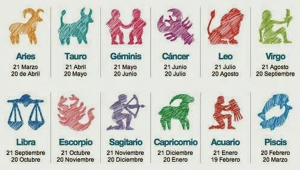
Why are you the sign you think you are?
The moment we are born, we are assumed to be of a certain sign based on the constellation where the Sun was at that time. Although we do not directly see the stars of such a constellation (since naturally, we cannot see stars during the day), it is enough to use a planisphere software (e.g. Stellarium) to see not only the position of the Sun on any date and time, but Also see the official limits of each constellation demarcated.*
In the example side image, you can see how the Sun is "located" in the constellation Taurus (within the delimited area of sky that corresponds to this constellation). During the year and as the Earth moves around the Sun, from our perspective as observers we will see that the Sun appears to "move" between different constellations -zodiacal- therefore always will find in some of them.
 If we assume for a moment as valid the date periods for each zodiac sign that we see on TV and newspapers (e.g. Taurus: April 20 to May 20; Gemini: May 21 to June 20; Cancer: June 21 to July 22; etc.), this implies that the Sun spends almost exactly 1 month in each zodiacal constellation during the year, and according to your date of birth, the zodiac sign corresponds to you depending on where the Sun was located.
If we assume for a moment as valid the date periods for each zodiac sign that we see on TV and newspapers (e.g. Taurus: April 20 to May 20; Gemini: May 21 to June 20; Cancer: June 21 to July 22; etc.), this implies that the Sun spends almost exactly 1 month in each zodiacal constellation during the year, and according to your date of birth, the zodiac sign corresponds to you depending on where the Sun was located.
However, and due to the movement of precession commented above, you are beginning to have an idea of why the previous approach has a problem. 1) The periods associated with the zodiac signs that we see on TV and newspapers use as a reference the moment in which the zodiac signs and associated astrology originated...a thousand years ago!. 2) The period of time during which the Sun "moves" in each zodiacal constellation is not "almost exactly a month«: In Pisces (a constellation that occupies a large area of the sky crossed by the ecliptic) it lasts for 37 days; in Scorpio (a constellation that is barely crossed in a smaller area within its limits by the ecliptic) it lasts for only 7 days.
For practical purposes, although several cultures are associated with the zodiac signs (Babylonians, Egyptians, Chinese, etc.), in this article the Greeks are used as a reference, the culture from which the word "zodiac" comes and because it is the Greek version that we use to refer to the names of the signs.

